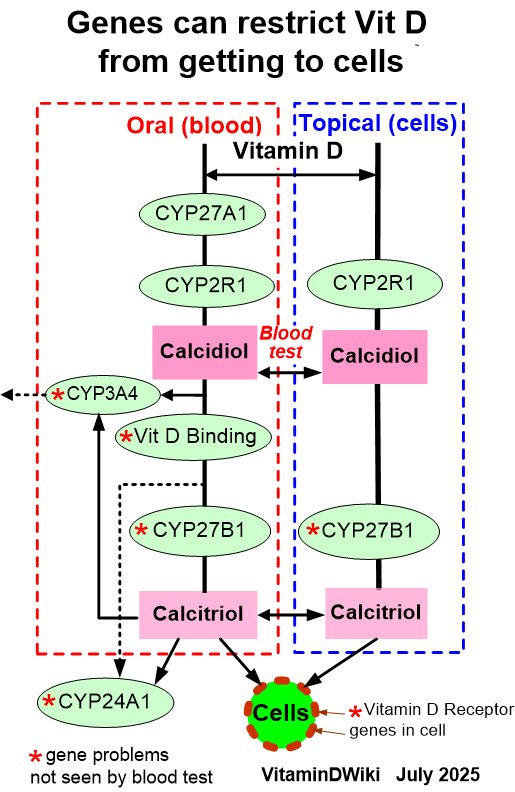During pregnancy less Vitamin D due to increased Vitamin D binding Protein
Vitamin D-Binding Protein in Pregnancy and Reproductive Health
by Melinda Fernando 1,Stacey J. Ellery 2OrcID,Clara Marquina 1OrcID,Siew Lim 1,Negar Naderpoor 1,† andAya Mousa 1, aya.mousa@monash.edu,†OrcID
1 Monash Centre for Health Research and Implementation (MCHRI) and Centre of Cardiovascular Research and Education in Therapeutics (CCRET), School of Public Health and Preventive Medicine, Monash University, Melbourne 3168 VIC, Australia
2 The Ritchie Centre, Hudson Institute of Medical Research and Department of Obstetrics and Gynaecology, Monash University, Melbourne 3168 VIC, Australia

 1. Vitamin D Binding Protein has a list of health problems
{include}
1. Pregnancy category starts with
{include}
1. Vitamin D Binding Protein has a list of health problems
{include}
1. Pregnancy category starts with
{include}
📄 Download the PDF from VitaminDWiki
Vitamin D-binding protein (VDBP), the main carrier of vitamin D, has recently been implicated in reproductive health and pregnancy outcomes including endometriosis, polycystic ovary syndrome (PCOS), pre-eclampsia, and gestational diabetes mellitus (GDM). Improved methods for measuring VDBP and an increased understanding of its role in biological processes have led to a number of newly published studies exploring VDBP in the context of pregnancy. Here, we synthesize the available evidence regarding the role of VDBP in reproductive health and pregnancy, and we highlight areas requiring further study. Overall, low levels of maternal serum VDBP concentrations have been associated with infertility, endometriosis, PCOS and spontaneous miscarriage, as well as adverse pregnancy outcomes including GDM, pre-eclampsia, preterm birth and fetal growth restriction. However, increased VDBP concentration in cervicovaginal fluid has been linked to unexplained recurrent pregnancy loss and premature rupture of membranes. Some genetic variants of VDBP have also been associated with these adverse outcomes. Further studies using more accurate VDBP assays and accounting for ethnic variation and potential confounders are needed to clarify whether VDBP is associated with reproductive health and pregnancy outcomes, and the mechanisms underlying these relationships


